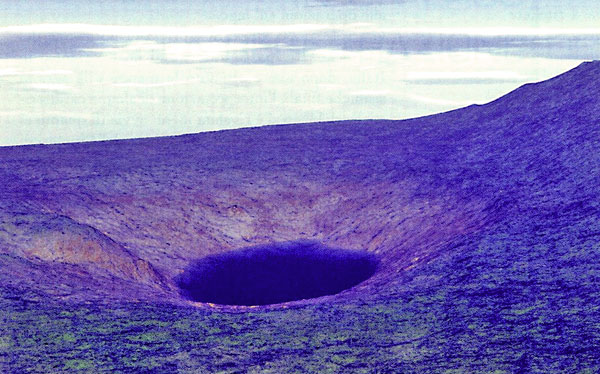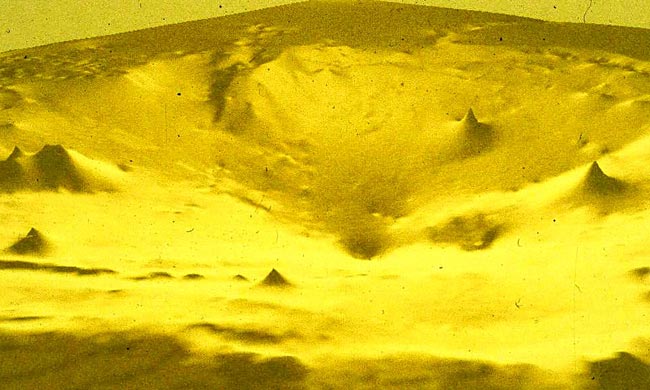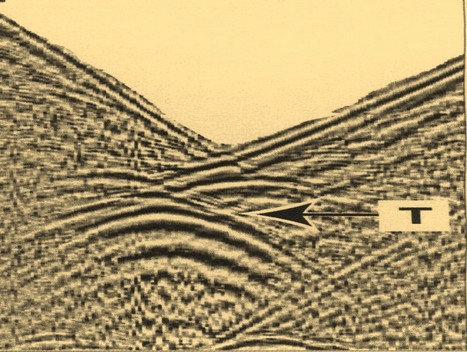|

by David Talbott and Wallace
Thornhill
Jul 05, 2007
from
Thuntherbolts Website

Lake Cheko in
the Siberian region of Tunguska has recently emerged as a candidate
for an “impact site”
linked to the famous Tunguska explosion of 1908.
Credit:
www-th.bo.infn.it/tunguska -
University of Bologna
A team of Italian scientists has announced seismic evidence of what
could be meteor fragments beneath Lake Cheko in Siberia - the first
"solid evidence" of a Tunguska asteroid.
On June 30, 1908, a massive explosion detonated in the skies over
Tunguska in northern Siberia. The resulting shock wave flattened
some 60 million trees across 2000 square kilometers. The blast was
heard hundreds of miles away and the cloud of dust colored the skies
of the Northern Hemisphere for months afterwards.
The first expedition to investigate the region could not locate any
sign of an impact event, nor did it recover any meteoric fragments.
A later expedition, however, did uncover magnetite globules and
various forms of silicate globules embedded in the earth and in the
trees.
Most scientists eventually settled on either an icy comet
explosively vaporized before reaching the surface, or a small rocky
asteroid exploding in the atmosphere and leaving no appreciable
fragments. But the absence of definitive evidence for an impact
invited many exotic theories - ranging from “mirror-matter” or a tiny
“quantum black hole,” to an exploding alien craft or a
Nikola Tesla
experiment gone awry.
In past discussions of
the Tunguska event, we have suggested
electric discharge between a small comet or
asteroid and the Earth. That suggestion was based on a wide variety
of recorded physical effects and the testimony of human witnesses.
More recently, however, a team of Italian researchers has suggested
that the 164-foot deep
Lake Cheko, five miles northwest of the
epicenter of the blast, could be the site of an impact by a meteor
or a fragment of the body responsible for the devastating Tunguska
event.

A 3-D sonar image
showing Lake Cheko's funnel shape hidden beneath its waters.
Researchers believe it's indicative of a meteoric impact.
The team reported that 3D sonar images
(above) of the lake’s bottom indicate
that it is funnel-shaped, something that might be expected of both
an impactor and an electric discharge. Using seismic detectors, the
University of Bologna scientists discovered an area of greater
density (below image) beneath the lake, noting that this could indicate the
remains of a meteor.
"When we looked at the bottom of the lake, we
measured seismic waves reflecting off of something," said Giuseppe
Longo, a physicist at the University of Bologna in Italy and
co-author of the study.
"Nobody has found this before. We can only
explain that and the shape of the lake as a low-velocity impact
crater."

A seismic
"reflection" beneath Lake Cheko.
Researchers think
a core sample will reveal evidence of a meteorite, which may
cause the reflection.
Credit:
www-th.bo.infn.it/tunguska
/ University of Bologna
According to a report on
the Space.com web site, however, some
physicists are skeptical about the small size of the Lake Cheko
crater.
"We know from the entry physics that the largest and most
energetic objects penetrate deepest," said David Morrison, an
astronomer with NASA's Ames Research Center.
Morrison wondered aloud
why only a fragment of the main explosion would reach the ground to
make a relatively small crater, while the greater portion would not
create a larger main crater.
But Alan Harris, a planetary scientist at the Space Science
Institute, points out that, in 1947, the Russian Sikhote-Alin
meteorite created 100 small craters. Some were 20 meters (66 feet)
across. A site in Poland also exists, he explained, where a large
meteor exploded and created a series of small lakes.
"If the
fragment was traveling slowly enough, there's actually a good chance
(the Italian team) will unearth some meteorite material," Harris
said.
The researchers will return to Tunguska this summer with plans to
drill beneath the bottom of Lake Cheko, hoping to find a meteorite.
From an Electric Universe perspective, if the Tunguska explosion was
the result of an electric discharge, a meteor fragment may indeed be
found, pointing to the source of the discharge.
But more likely, the
increased density beneath the lake could be the signature of the
electric arc that excavated the depression, producing the fused
sands and soils of a fulgurite.
|



